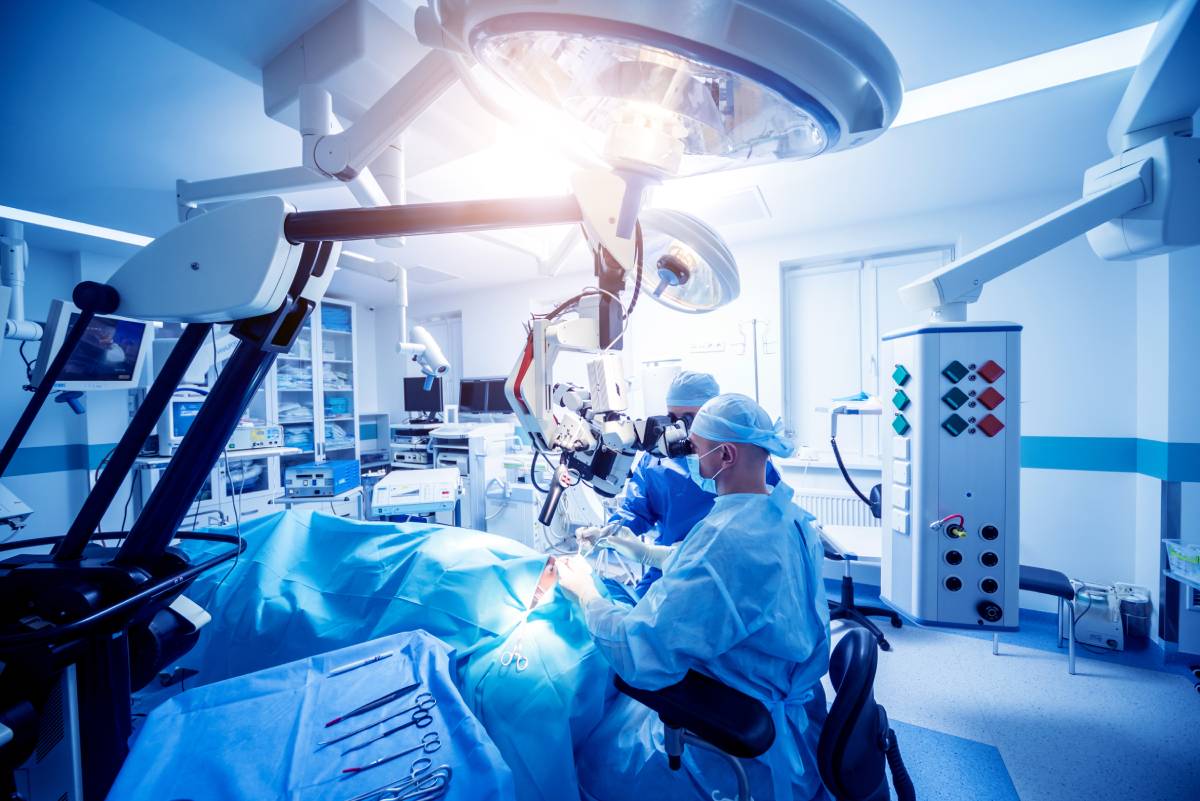A stable body temperature is critical for normal physiological functioning; the average core temperature for healthy humans is around 37℃, or 98.6℉. This vital sign often fluctuates during surgery and anesthesia, particularly general anesthesia, which can have harmful physiological effects and can cause significant detriment to patient outcome [1]. Guidelines for temperature management under general anesthesia vary between regions and individual care facilities; developing an understanding of thermoregulation in the operating room is crucial towards creating standardized treatment algorithms [2].
Under normal circumstances, the core compartment of the body (head and thorax) typically stays around 37℃, whereas peripheral areas are usually 2℃-4℃ cooler. This gradient is maintained by the hypothalamus, a major neural site for basic life functions [1]. Although the hypothalamus is one of the oldest and smallest areas in the adult brain, it controls aspects of living including but not limited to: energy metabolism (e.g., digestion, metabolic control, energy expenditure), fluid and electrolyte balance, thermoregulation, wake-sleep cycles, and reproduction.
During thermoregulation, the hypothalamus will integrate thermal input and activate effector mechanisms to normalize temperature [3]. Effector mechanisms include behavioral and autonomic regulatory processes. Behavioral regulation refers to voluntary movement or actions taken against thermal dysfunction; autonomic regulation covers involuntary effects, such as vasodilation, sweating, thermogenesis, etc. More energy efficient responses are maximized before more metabolically costly responses are activated; in the body, this means vasoconstriction, or the narrowing of blood vessels, is generally initiated before shivering, a metabolically costly bodily action.
General anesthesia may lower the threshold of these effector mechanisms; i.e., sweating typically occurs around 37℃ but the sweating threshold of a patient under general anesthesia might hover around 33℃ [1]. Additionally, all effector mechanisms and their thermal thresholds normally stay within the inter-threshold range; while this range may differ depending on exercise, food intake, sex, etc., the difference is only a tenth of a degree centigrade [3]. Under general anesthesia, the inter-threshold range expands, complicating temperature management: the threshold for shivering may increase by 2℃-3℃, while the threshold for vasodilation could decrease by the same amount. While this is true of most anesthetics, certain anesthetic agents have a more potent effect than others. For example, propofol and dexmedetomidine are known to significantly increase the sweating threshold, while the inhalational agents (halothane, isoflurane, desflurane, enflurane) only slightly increase the sweating threshold [4,5].
Hypothermia can occur under general anesthesia as a result of anesthetic-impaired thermoregulation (i.e., vasodilation [6], vasoconstriction, reduced metabolic rate, etc.) or from exposure to a colder environment in the OR. During the perioperative state, heat transfer from the human body typically occurs through evaporation, convection, radiation, or conduction. Of these, radiation (which can happen with all surfaces of a temperature above absolute zero) and convection (which occurs when the layer of still air adjacent to the skin is disturbed) contribute most heavily to heat loss in the operating room. Like general anesthesia, neuraxial anesthesia also impairs the body’s temperature management by blocking thermal input from anesthetized regions, reducing vasoconstriction, and changing effector mechanism thresholds [7]. Supplementary anesthesia provided by analgesics or sedatives may worsen this response [1].
Considering the fragile relationship between temperature and anesthesia, continuous thermal monitoring and management is crucial for patients under general anesthesia. Treatment for temperature fluctuations must be correctly incorporated into patient anesthetic plans. Overall, research has shown that it is not a far-fetched statement to say: making thermoregulation a higher priority can improve our stance in the clinical world.
References
- Bindu, Barkha, et al. “Temperature Management under General Anesthesia: Compulsion or Option.” Journal of Anaesthesiology, Clinical Pharmacology, vol. 33, no. 3, 2017, pp. 306–16. PubMed Central, https://doi.org/10.4103/joacp.JOACP_334_16
- Seder, David B., and Thomas E. Van der Kloot. “Methods of Cooling: Practical Aspects of Therapeutic Temperature Management.” Critical Care Medicine, vol. 37, no. 7, July 2009, p. S211. journals.lww.com, https://doi.org/10.1097/CCM.0b013e3181aa5bad
- Saper, Clifford B., and Bradford B. Lowell. “The Hypothalamus.” Current Biology, vol. 24, no. 23, Dec. 2014, pp. R1111–16. ScienceDirect, https://doi.org/10.1016/j.cub.2014.10.023
- Annadata, Radhika, et al. “Desflurane Slightly Increases the Sweating Threshold but Produces Marked, Nonlinear Decreases in the Vasoconstriction and Shivering Thresholds.” Anesthesiology, vol. 83, no. 6, Dec. 1995, pp. 1205–11. DOI.org (Crossref), https://doi.org/10.1097/00000542-199512000-00011
- Delaunay, L., et al. “Clonidine Comparably Decreases the Thermoregulatory Thresholds for Vasoconstriction and Shivering in Humans.” Anesthesiology, vol. 79, no. 3, Sept. 1993, pp. 470–74. PubMed, https://doi.org/10.1097/00000542-199309000-00009
- Robinson, B. J., et al. “Mechanisms Whereby Propofol Mediates Peripheral Vasolidation in Humans.” Anesthesiology, vol. 86, no. 1, Jan. 1997, pp. 64–72. DOI.org (Crossref), https://doi.org/10.1097/00000542-199701000-00010
- Ozaki, Makoto, et al. “Thermoregulatory Thresholds during Epidural and Spinal Anesthesia.” Anesthesiology, vol. 81, no. 2, Aug. 1994, pp. 282–88. DOI.org (Crossref), https://doi.org/10.1097/00000542-199408000-00004
